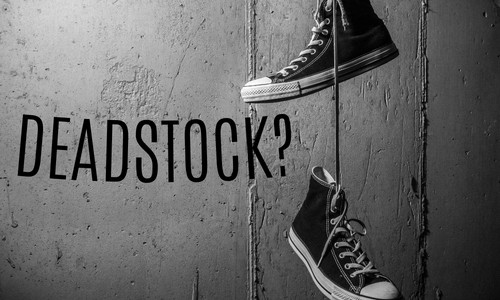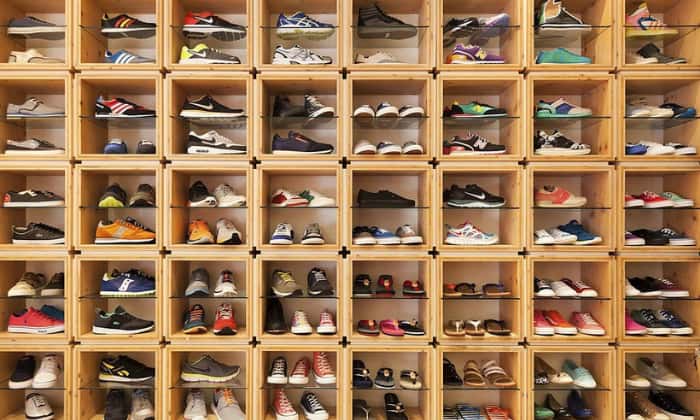If you’re a sneakerhead, you’re probably familiar with various sneaker terminologies. However, there are always new acronyms to uncover. For today’s article, we wil decode the answer to our reader’s question: What does DS mean in shoes?
DS is short for deadstock sneakers. Now, I know you have more questions in your head. Are DS sneakers the same as authentic sneakers? Let’s discuss what deadstock items are so you can decide whether to buy one or not.
Table of Contents
What Does DS Stand for in Shoes?
DS—the abbreviation of deadstock—refers to “never-been-worn” authentic sneakers with original undamaged boxes and tags. They were released in the market but went unsold, such as:
- Popular shoe models that became out-of-date
- Limited edition sneakers
- Shoes that were made in small quantities
One such example is the Air Jordan, which Nike released in April 1985 when Chicago Bulls player Michael Jordan signed a 5-year contract with the company.
Ways to Identify a DS
Here is a quick guide on how to tell whether the shoes are a DS or not:
- The shoe model is no longer available in both traditional retail stores and the brand’s official app.
- DS in shoe sizing is limited to what’s available in circulation. With the latest sneaker models, you can contact the store to inquire about available sizes.
- If the price on StockX or eBay is higher than the retail price, then the sneakers in question might be a DS.
- Try searching for the shoes you want to buy on Google to see whether the brand has re-stocked that particular model. If they haven’t released a new batch in a couple of months or years, then you’ve likely found a DS.
You probably also encountered the term BNDS, which stands for “brand new deadstock”. DS and BNDS mean the same thing given that both terminologies refer to “brand new” shoes.
If shoes have been tried on at least once, they would be classified as “very near deadstock” or VNDS—not “DS.” Other collectors can also refer to this type of shoe condition as “pass as deadstock” PADS.
The Origin and Evolution of DS
The exact origin of the term “DS” remains unclear. Some references say that it became a popular term when people buy and sell at eBay. As a result, the sneakerheads on the said platform adopted it.
Other references claim that the “DS” was widely used among street fashion communities. Later on, sneaker collectors caught on eventually. But back then, DS only referred to shoes that were no longer manufactured and sold in retail stores.
As time went by, DS was given a whole new meaning, which as stated earlier, implies that the shoes were never taken out of the box.
Deadstock Shoe Situation
As the sneakerhead communities grow bigger, many collectors are looking for DS condition shoes. Retailers like StockX and Goat or online auctions like eBay know this all too well. These shops have been the go-to place for shoe models that went out of stock in official retail stores.
If you’re looking to purchase a pair of Air Jordan sneakers from the 80s, you can expect that they are hard to find given that they are no longer available on the market. But as you’re competing against hundreds—if not thousands of shoe collectors—the prices of these most-coveted shoes would soar.
Goat, a buy-and-sell platform, has plenty of DS sold upward of $900. Meanwhile, some secondhand shoes start at $700. This goes to show that DS shoes are sneaker collectors’ priced possessions. They would go to great lengths to ensure that they are not getting VNDS or the secondhands.
Some articles define DS differently from the one we stated earlier. For them, there are two types of DS.
- The first type, which they refer to as “1,” shoes that were never taken out of the box.
- The second type is “2”, which means that the seller has worn them to photograph the product and placed them back in the box. Just by trying them on once, the feet can already alter the shape of shoes.
Are DS Shoes Worth It?
For avid collectors, DS shoes are worth every penny because of their high resale value. Some of them wear their collected sneakers but others don’t. But while they may be the sought-after models, they also come with some disadvantages.
- Firstly, boxes are not designed for long-term storage. If the sneakers stay in that box for a long time, they do not get proper air circulation, which leads to material damage.
- Secondly, you can’t try DS shoes on to see if they fit you well before you finalize your purchase.
- Plus, their warranties are voided.
Nevertheless, buying a DS can be a good idea if you intend to display your sneakers or resell them in the future to earn some money.
Conclusion
While the primary goal of this article is to answer the question “What does DS mean in shoes?”, it’s important to understand how to spot DS sneakers and consider their pros and cons as well. We think that it is best to cite examples and share different ways to help you spot a DS.
Indeed, there are no hard and fast rules as to whether one can wear DS kicks or not. Just be mindful that the shoe material may not be the same as when they were freshly made out of the factory decades ago. Without the warranty, you cannot get them replaced when the uppers and soles do not hold up against normal wear.

Veronica is our content editor. She is a talent in delivery. Her main work is editing and writing articles that are both informative and simple to follow. She is in charge of synthesizing our understanding of what personal protection equipment (PPE) is needed in each job, how to best apply it, and how to visualize that equipment.







